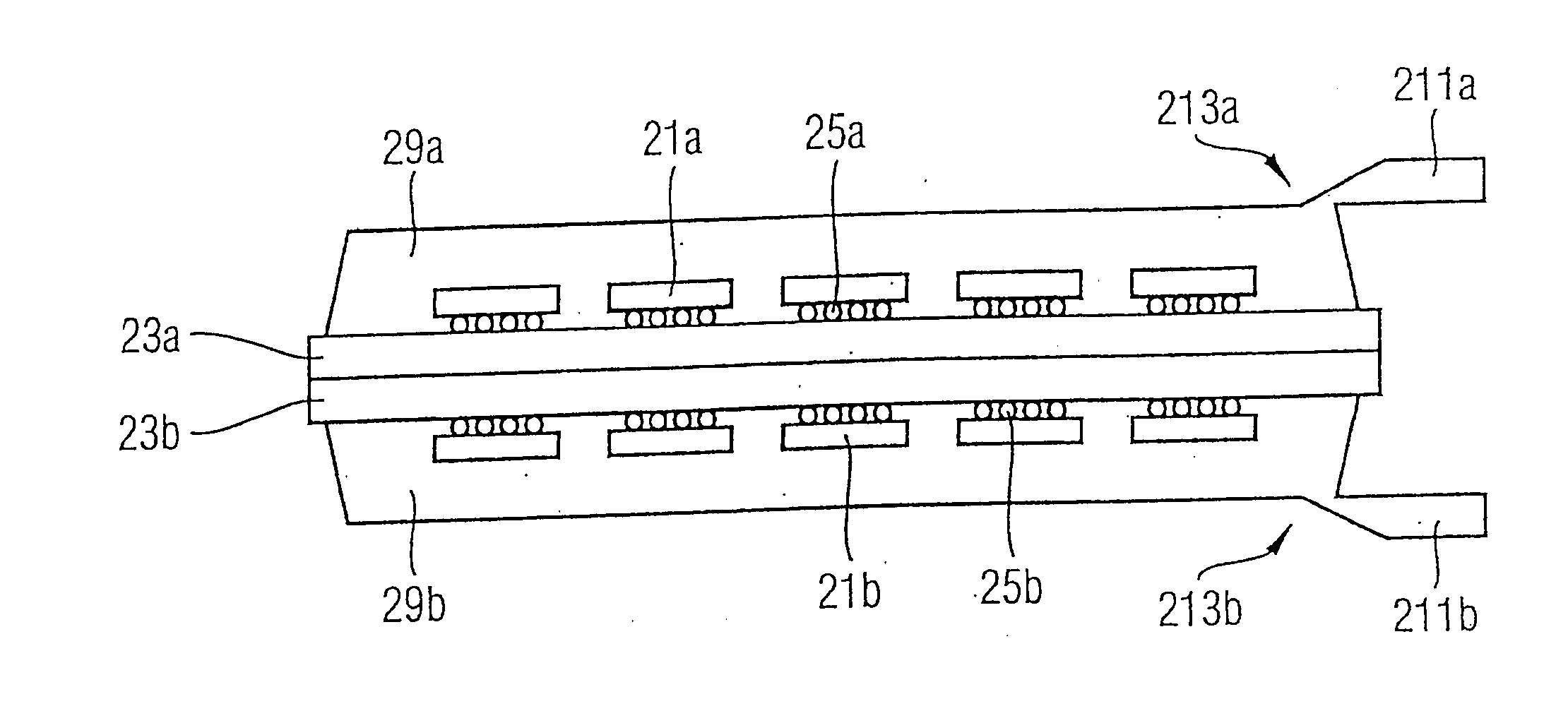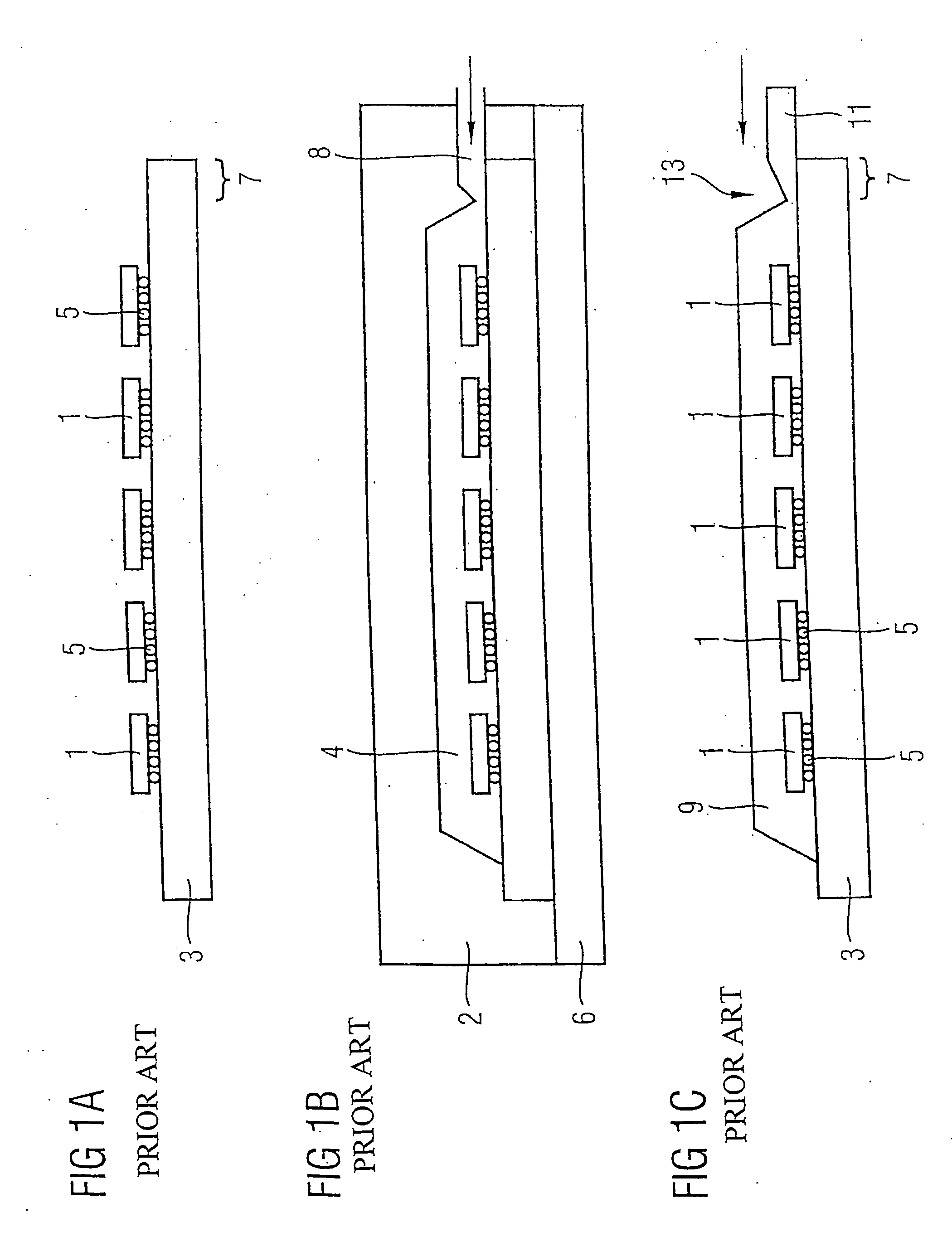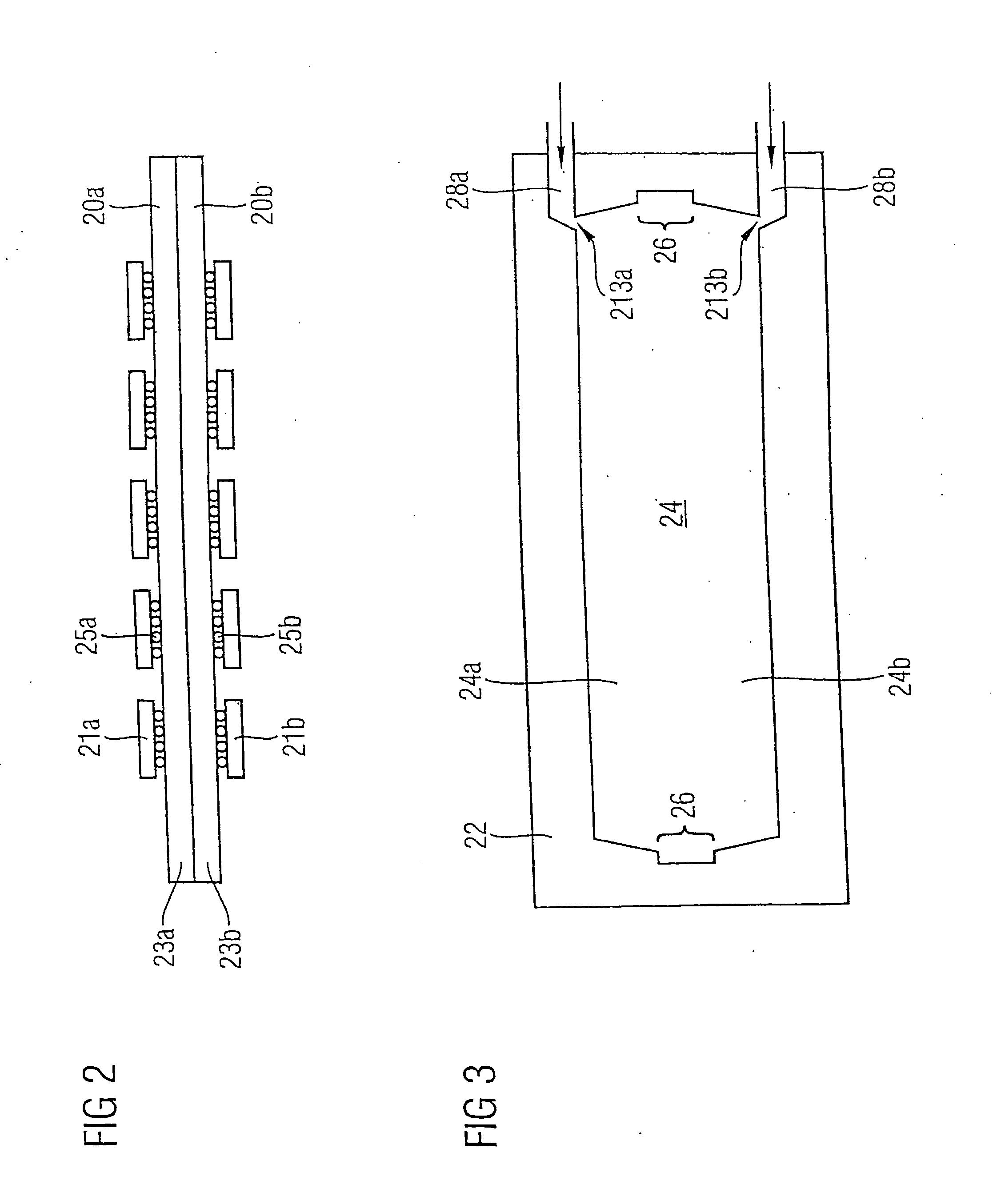Method for packaging integrated circuit dies
- Summary
- Abstract
- Description
- Claims
- Application Information
AI Technical Summary
Benefits of technology
Problems solved by technology
Method used
Image
Examples
Embodiment Construction
[0028] Referring to FIG. 2, the first step of a method which is an embodiment of the invention is shown. In the molding method, the two substrates 23a, 23b are each of the kind shown in FIG. 1. These substrates may, for example, be printed circuit boards, or otherwise include electrical circuitry, extending, for example, parallel to the major surfaces of the substrate. Their surfaces 20a, 20b carry dies 21a, 21b connected to the substrates 23a, 23b by a ball grid array (BGA), e.g., of eutectic solder balls 25a, 25b. The substrates 23a, 23b are placed in a back-to-back configuration, so that their back faces are in contact, and their front faces 20a, 20b, carrying dies 21a, 21b, are directed in opposite directions.
[0029] As shown in FIG. 3, the substrates 23a, 23b are placed in this configuration into a mold cavity 24 in a mold chase 22, such that the cavity 24 is divided into two cavities 24a, 24b (in FIG. 3, these are respectively the upper and lower portions 24a, 24b of the cavit...
PUM
 Login to View More
Login to View More Abstract
Description
Claims
Application Information
 Login to View More
Login to View More - R&D
- Intellectual Property
- Life Sciences
- Materials
- Tech Scout
- Unparalleled Data Quality
- Higher Quality Content
- 60% Fewer Hallucinations
Browse by: Latest US Patents, China's latest patents, Technical Efficacy Thesaurus, Application Domain, Technology Topic, Popular Technical Reports.
© 2025 PatSnap. All rights reserved.Legal|Privacy policy|Modern Slavery Act Transparency Statement|Sitemap|About US| Contact US: help@patsnap.com



